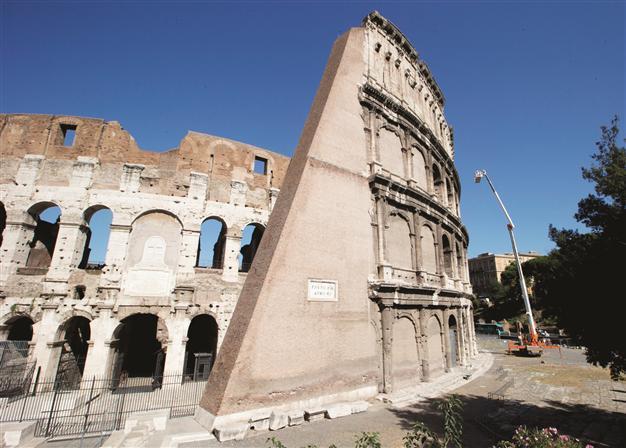First Pisa, now Rome’s Colosseum is leaning
ROME - Reuters

Technicians drop stones from the top of ancient Colosseum to evaluate possible risks to visitors. Test are done to evaluate the eventual need of new measures. AP photo
The ancient Colosseum of Rome, where gladiators fought for their lives, is slanting about 40 cm lower on the south side than on the north, and authorities are investigating whether it needs urgent repairs. Experts first noticed the incline about a year ago and have been monitoring it for the past few months, Rossella Rea, director at the 2,000-year-old monument, said in an article published in the Italian daily Corriere della Sera on July 29.The Leaning Tower of Pisa, another of Italy’s most popular attractions, was reopened in 2001 after being shut for more than a decade as engineers worked to prevent it from falling over and to make it safe for visitors.
Rea has asked Rome’s La Sapienza University and environmental geology institute IGAG to launch a study on the phenomenon, with investigations to be concluded in a year.
Tests have also started to observe the effects that traffic on nearby busy roads may have on the monument.
Professor Giorgio Monti, from La Sapienza’s construction technology department, warned there may be a crack in the base below the amphitheater. “The slab of concrete on which the Colosseum rests, which is like a 13-meter-thick oval doughnut, may have a fracture inside it,” he told the newspaper. He said intervention could be necessary if the concerns are confirmed, along the lines of stabilization work carried out in Pisa, but he said it was too early to judge what kind of intervention would be most suitable.
The Colosseum - famous for hosting bloody gladiator fights in the days of the Roman Empire - attracts hundreds of thousands of tourists and is usually packed with visitors.
















